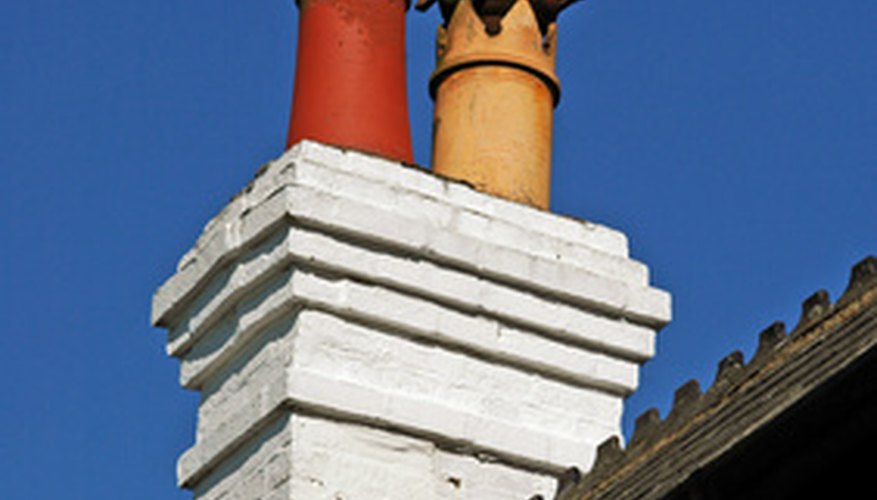Chimney pots have been popular in the U.S. since the 19th century and although no longer an essential architectural feature, they continue to be a desirable design addition to many houses.
It can be difficult dating antique chimney pots as there's little information available on them. According to Gordon Bock in the Old House Journal "students and restorers of these fanciful features will be hard pressed to find a wealth of historical background about them." Thanks to a dedicated few, however, you can find information to help you establish an approximate date and period.
Identify the shape and design of your antique chimney pot. The design of early English pots were as important as their function -- to increase the draft up the chimney, drawing soot, fumes and smoke out of the house. Once across the Atlantic chimney pots were adopted as an essential style element of many American homes. Referred to as the Gothic Revival period (mid 1800s), the chimney pot designs of this time were particularly popular.
- Chimney pots have been popular in the U.S. since the 19th century and although no longer an essential architectural feature, they continue to be a desirable design addition to many houses.
- The design of early English pots were as important as their function -- to increase the draft up the chimney, drawing soot, fumes and smoke out of the house.
Macclesfield County Council in the north of England includes sketches of chimney pots typical of each century on cheshireeast.gov.uk. Because many chimney pots are believed to have originated in England, then brought to the U.S. in the mid-1800s, English designs offer reliable dating information. As such, the sketches may provide a good match to your own antique chimney pot.
Study Andrew J. Downing's 19th century expertise. One of America's first celebrated architectural design talents, his passion for chimney pots cemented their popularity and desirability. He includes details about their function, style and specific designs in his 1842 book "Cottage Residences," and his name is still synonymous with chimney pots even today.
- Macclesfield County Council in the north of England includes sketches of chimney pots typical of each century on cheshireeast.gov.uk.
- He includes details about their function, style and specific designs in his 1842 book "Cottage Residences," and his name is still synonymous with chimney pots even today.
During the Gothic Revival period, the polygonal style was one favoured by Downing and a good example of a chimney pot dating back to the 1840s. Matching the style to the period in this way can help you find a date.
Visit American speciality chimney pot outlets, either online or in person. The people who run these are generally experts in the whole area including antique and reproduction.
The Chimney Pot Shoppe, for example, has lots of valuable information online that can help you establish a date. There are photographs, historical explanations and even instructions on how to fit them.
English Antique Imports in North Carolina also offers expert advice on antique chimney pots and their site includes pictures of original pots the company has salvaged directly from England (see References 3).
- During the Gothic Revival period, the polygonal style was one favoured by Downing and a good example of a chimney pot dating back to the 1840s.
- English Antique Imports in North Carolina also offers expert advice on antique chimney pots and their site includes pictures of original pots the company has salvaged directly from England (see References 3).
TIP
Cincinnati, Louisville and Philadelphia still have lots of houses with original chimney pots so any information about local architectural history may help you identify your particular one. Note that U.S. Customs defines "antique" as objects of historical or aesthetic significance more than 100 years old so be clear about your expectations when conducting your research.
